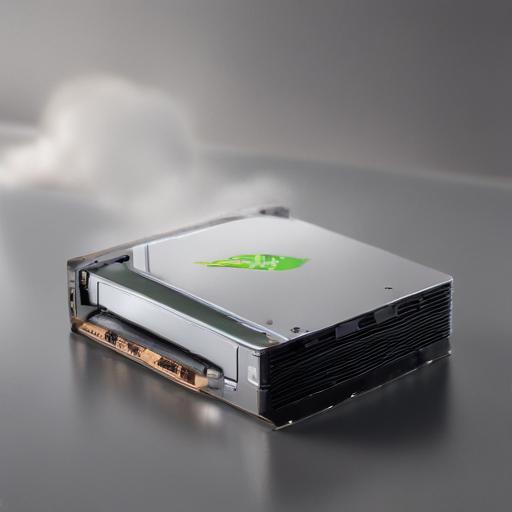GeForce Now is set to get a major upgrade this September with Nvidia’s Blackwell GPUs in the cloud, effectively letting subscribers rent RTX 5080-class power with 48GB of memory and DLSS 4. The service will stream near-maxed-out PC games to phones, Macs, PCs, TVs, set-top boxes, or Chromebooks for $20 a month.
Key updates and caveats
– Install-to-Play returns: Nvidia is bringing back the ability to install games without waiting for the service to curate them, dramatically expanding the library. However, not every PC game will be eligible. Games that opt into Valve’s Steam Cloud Play will be immediately selectable, with around 2,352 titles appearing at launch. Publishers can opt in to add more games and demos on release dates beyond Nvidia’s curation.
– Publisher participation: In practice, many publishers participate through Valve’s distribution network, including Ubisoft, Paradox, Nacon, Devolver, TinyBuild, and CD Projekt Red.
– Download-and-play logistics: Install-to-Play games won’t launch instantly; you’ll need to download and install them each time unless you pay for persistent storage—200GB for $3/month, 500GB for $5/month, or 1TB for $8/month.
– Higher-resolution and frame-rate options: GeForce Now now supports streaming at 5K resolution up to 120fps, and at 1080p up to 360fps. There are also 5K120, 1080p360, and 1440p240 modes.
– Cinematic Quality Streaming: A new optional mode aims to reduce color bleed and restore detail for streamed scenes. It uses HDR10/SDR10, YUV 4:4:4, AV1, and an AI video filter, with streaming up to 100Mbps.
– Native device integrations: Steam Deck OLED owners can stream at 90Hz, up from 60Hz; LG will offer a native GeForce Now app directly on 4K OLED TVs and 5K OLED monitors (no Android TV, Chromecast, or external box required). Logitech racing wheels with haptic feedback are now supported.
– Performance vs. availability: Nvidia isn’t promising a 5080-tier experience for every game. The top Ultimate tier will continue to include RTX 4080-class cards for the time being, while 5080 performance will roll out as capacity expands. Nvidia lists several games expected to benefit immediately, including Apex Legends, Assassin’s Creed Shadows, Baldur’s Gate 3, Black Myth Wukong, Cyberpunk 2077, and more.
– Latency and reliability: Nvidia notes a latency boost thanks to partnerships with ISPs and the new 360fps mode. The company claims end-to-end latency around 30ms in Overwatch 2 under the right conditions, though real-world results depend on location and network quality.
– Pricing: The GeForce Now Ultimate tier remains $19.99/month, with no planned price increases announced at this time.
– Discord trial integration: Nvidia is testing a cloud-gaming “try a game” experience via Discord, letting users jump into Epic Games titles without a GeForce Now login. It’s described as a technology announcement rather than a ready-for-launch feature, with potential for publishers and developers to opt in.
Additional notes and context
– Expect continued caveats around cloud gaming: the actual experience hinges on your network, distance to data centers, and ISP routing. While the move to higher-end hardware and higher bandwidth thresholds is promising, latency remains a crucial factor for fast-paced titles.
– Notable gaps: Sony and Rockstar titles aren’t expected on GeForce Now in the near term, per Nvidia’s statements.
– Wider implications: If Install-to-Play and 5080-class cloud power scale as described, GeForce Now could edge closer to feeling like a true console alternative, expanding access to high-end gaming across a broader range of devices and form factors.
Summary and outlook
Nvidia’s September rollout promises a substantial leap in cloud gaming capabilities with Blackwell-class hardware, expanded game access through Steam Cloud Play, and higher streaming resolutions and frame rates. The combination of Install-to-Play, persistent storage options, and tighter integrations with devices like the Steam Deck and LG OLED displays could significantly widen the appeal of cloud gaming. If Nvidia can maintain low latency and ensure a broad, publisher-friendly catalog, GeForce Now may become a more compelling option for players seeking strong performance without owning a top-tier PC.
Why this matters
– A broader library through Steam Cloud Play lowers the friction for players to try and own more games via streaming.
– Higher fidelity streaming (5K120, 1080p360) and the Cinematic Quality mode address common pain points around image quality and readability in cloud gaming.
– Persistent storage options, tiered pricing, and ongoing latency optimizations could make cloud gaming a more viable everyday alternative to console or PC gaming.
Positive spin
This move could democratize access to high-end graphics, letting more players enjoy premium games at near-peak settings on devices they already own. If the rollout delivers on latency and reliability, and publishers continue to opt in, cloud gaming could become a practical, scalable substitute for local hardware upgrades, with the potential to broaden gaming communities across platforms.
